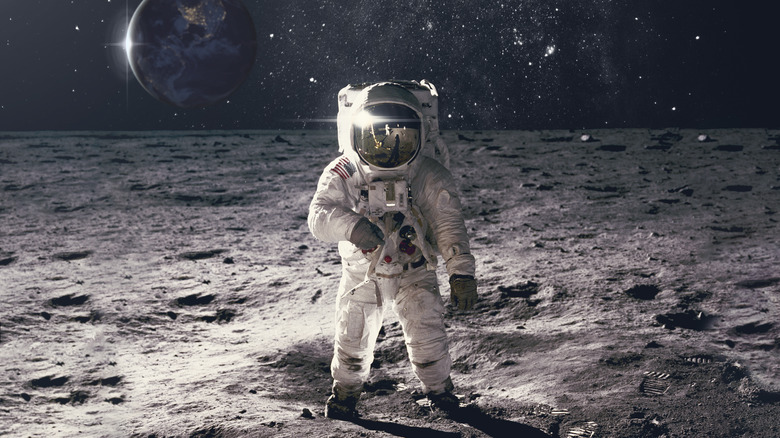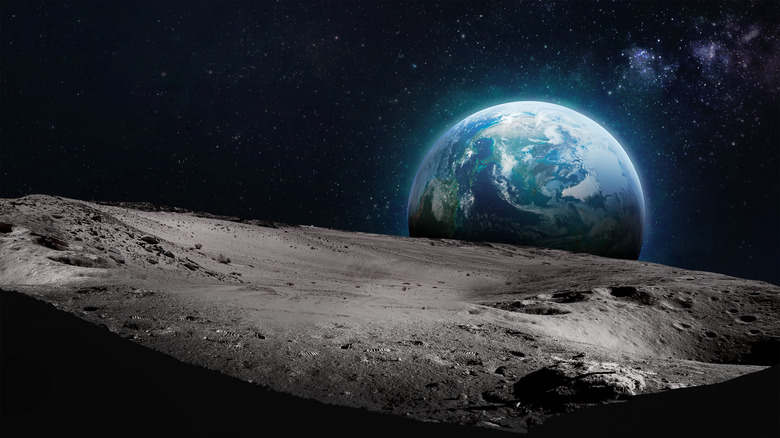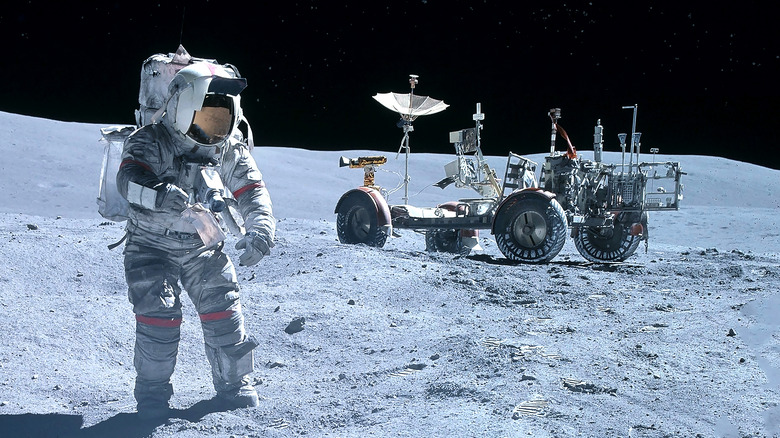The Real Reason For The Moon Landing Conspiracy
The American moon landing was a monumental feat that took place in the summer of 1969 when Neil Armstrong and Buzz Aldrin became the first men to walk on the moon (via NASA). The space milestone, which was the culmination of years of hard work, was broadcast to millions of Americans and people worldwide. To most of those tuning in, there was no question that what they were seeing was actually taking place, no matter how awe-inspiring it felt. There was at least one person, though, who just couldn't believe the moon landing to be true. In the end, this turned out to make all the difference.
Bill Kaysing had worked as a technical writer and head of technical publications for the company Rocketdyne in the years before the Apollo 11 mission, as told by his daughter Wendy. He quit the company in 1963 and began leading a more non-conformist lifestyle on the fringes of society. His trust in the government, and most facets of the modern world, grew tenuous. Years after the moon landing took place, he wrote the book that started it all: "We Never Went to the Moon: America's Thirty Billion Dollar Swindle." This work gained traction with many other like-minded people and ushered in what we know today as the moon landing conspiracy.
Why Bill Kaysing believed the moon landing was faked
After Bill Kaysing left his job at Rocketdyne, he eventually became something of a vagabond, as explained in his obituary by The Independent. First, he sold his home, then he bought a trailer to take his family on what was essentially a never-ending road trip. Soon he left his family, too, and continued living life on the road. Kaysing was a writer first and foremost and he published works that instructed others on how they could lead a life similar to his own. There came to be, however, an anti-status quo undertone in his later writings that eventually gave way to a conspiratorial mindset.
At first, the idea to write a book on how the moon landing was faked was meant to be a work of satire; this was agreed upon with the publishing company that gave him a contract. As Kaysing got into writing the book, though, the "evidence" he came up with began to persuade him until he felt like what he was writing was the truth, as he explained in a 1975 interview with the Los Angeles Free Press. This includes his belief that the probability of the moon landing was somewhere at .017%, though he never discloses where that figure came from. He used documents and his time working at Rocketdyne to further propel his conspiracy. He also proposed his own conspiracy about what he thought actually happened to create the moon landing. Using an underground movie set, as well as special effects and camera tricks, Kaysing believed the government simply made all the footage up.
How the moon landing conspiracy gained traction
Even before Bill Kaysing came out with his book, distrust in the government was toiling among the U.S. population in the aftermath of the Watergate scandal, as explained by Gallup. With definite proof that those in power could lie to the public as the Nixon administration did, the public felt uneasy about the government as a whole. When Bill Kaysing published "We Never Went to the Moon" in 1976, plenty of people were ready to latch onto his ideas, which quickly snowballed out of control.
In 2001, Fox brought Kaysing onto a program it aired called "Conspiracy Theory: Did We Land on the Moon?" During this, Fox described Kaysing as a Moon Hoax Investigator, and the arguments he presented were never challenged. This launched his theories even further into the public consciousness, perpetuating the belief that the moon landing was a hoax. Many people began to sow misinformation of their own, alleging that Stanley Kubrick was the director of the moon landing footage, that some occurrences in the footage don't line up with physics, and that NASA as a whole is feeding society lies. The distrust of NASA is now a common theme in many other science-oriented conspiracies, such as the flat earth theory.
Even though the moon landing conspiracy now pales in comparison to the damage done by the likes of anti-vax groups and QAnon, it's certainly one of the earliest examples of widespread misinformation that laid the bedrock for similar paranoid conspiracies to come.


